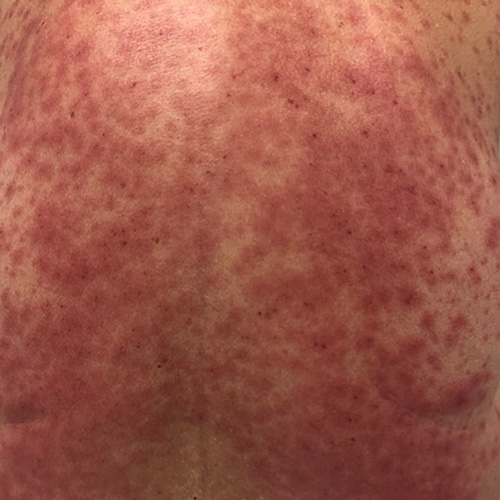Urticarial vasculitis
Urticarial vasculitis is a condition consisting of persistent urticarial skin lesions that have the histopathological features of leukocytoclastic vasculitis Kolkhir, 2019. See Urticarial vasculitis for a photo of urticarial vasculitis. Most cases of urticarial vasculitis are idiopathic, but some are associated with monoclonal gammopathies, haematological malignancies, autoimmune connective tissue disease (eg systemic lupus erythematosus, Sjögren syndrome), infections or drugsDavis, 2018Kolkhir, 2019.
Consider urticarial vasculitis if urticaria-like lesions present with burning pain rather than itch, persist for more than 24 to 48 hours, and fade with bruising or postinflammatory hyperpigmentationDavis, 2018.
If urticarial vasculitis is suspected, consider a skin biopsy for histology and direct immunofluorescence to confirm the diagnosis, or refer for specialist assessment.
Urticarial vasculitis with normal complement levels is usually limited to the skin, but patients with the hypocomplementemic form can have systemic symptoms (eg fever, malaise, lymphadenopathy) and other organ involvement (eg joints, kidneys, eyes, nervous system)Davis, 2018.

Photo sourced with permission from Dr Michelle Goh.
